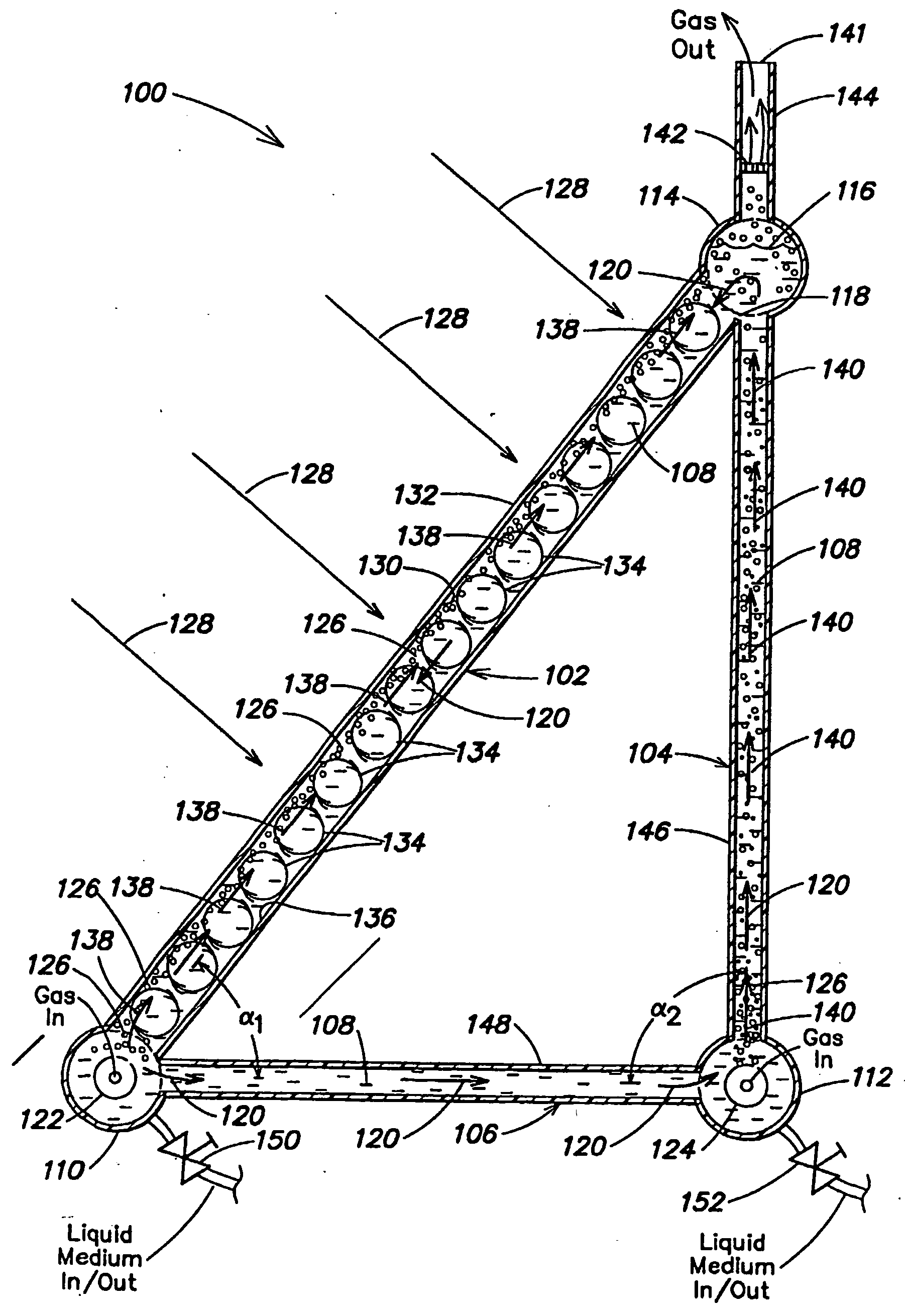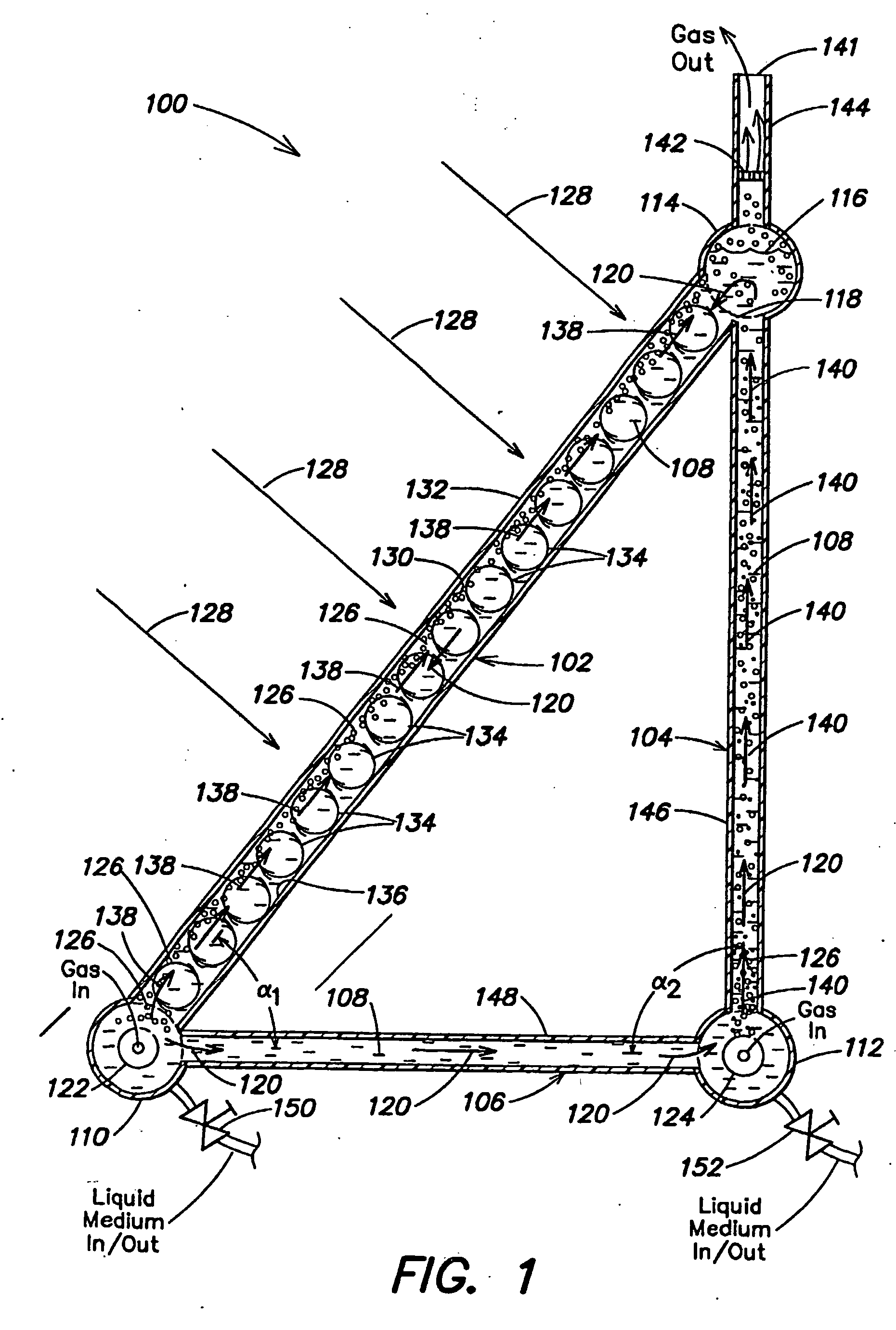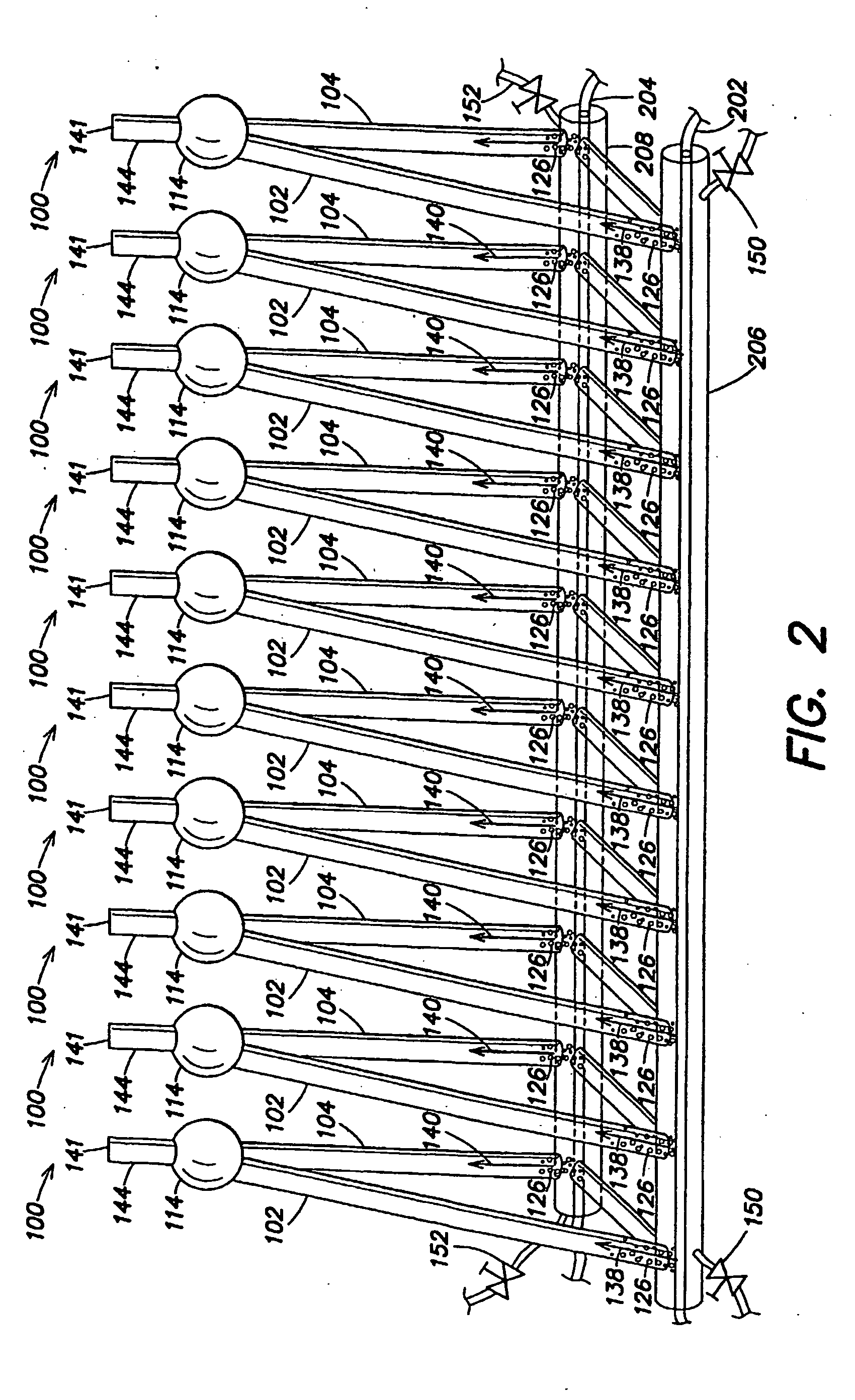Hydrogen production with photosynthetic organisms and from biomass derived therefrom
a technology of photosynthetic organisms and biomass, which is applied in the direction of biochemistry apparatus and processes, separation processes, disinfection, etc., can solve the problems of no rate-limiting step in the aqueous phase, no commercial success to date, and limited efficiency
- Summary
- Abstract
- Description
- Claims
- Application Information
AI Technical Summary
Benefits of technology
Problems solved by technology
Method used
Image
Examples
example 1
Mitigation of CO2 and NOx with a Three-Photobioreactor Module Including Three Triangular Tubular Photobioreactors
Each photobioreactor unit of the module utilized for the present example comprised 3 tubes of essentially circular cross-section constructed from clear polycarbonate, assembled as shown in FIG. 1, with α1=about 45 degrees and α2=about 90 degrees. In this essentially triangular configuration, the essentially vertical leg was 2.2 m high and 5 cm in diameter; the essentially horizontal leg was 1.5 m long and 5 cm in diameter; and the hypotenuse was 2.6 m long and 10 cm in diameter. The photobioreactor module comprised 3 adjusted units arranged in parallel, similarly as illustrated in FIG. 2. This bioreactor module has a footprint of 0.45 m2
A gas mixture (certified, AGA gas), mimicking flue gas composition was used (Hiroyasu et al., 1998). The total gas flow input was 715 ml / min per each 10 liter photobioreactor in the module. Gas distribution to the spargers injecting ga...
examples 2-5
Photobioreactor Arrays for Mitigation of Power Plant Flue gas Pollutants and Production of Algal Biomass
All examples below relate to a 250 MW, coal-fired power plant with a flue gas flow rate of 781,250 SCFM, and coal consumption of 5,556 tons / d. Flue gas contains CO2 (14% vol), NOx (250 ppm) and post-scrubbing level of SOx (200 ppm, defined in the US 1990 Clean Air Act Amendment). 12 h / d sunlight is assumed, as is a mean value of solar radiation of 6.5 kWh / m2 / d, representing typical South-Western US levels (US Department of Energy). Algal solar efficiency of 20% is assumed, based on performance data of Example 1 and literature values (Burlew, 1961). Daytime algal CO2 and NOx mitigation efficiency is 90% and 98% (respectively), and at night 0% and 75% (respectively), based on Example 1 performance and literature values (Sheehan et al., 1998; Hiroyasu et al., 1998). Biodiesel production potential is 3.6 bbl per ton of algae (dry weight) (Sheehan et al., 1998). System size and perfo...
example 6
Use of a Small-Scale Automated Photobioreactor Cell Culture System for Preconditioning of Algal Cultures to High Intensity Illumination and Photomodulation
A culture of the microalgae Dunaliella parva (UTEX.) was grown and adapted, as described below, using a small-scale photobioreactor system similar to that illustrated in FIGS. 8a-8f. The medium used was the same modified F / 2 described in Example 1. The cell culture module had an internal culture volume of about 10 ml. Gas exchange was performed utilizing a silicone-coil gas exchanger, similar to gas exchanger 862 of FIG. 8a, which was fed a gas mixture comprising 8% CO2 (balance air) at a rate of 100 ml / min. Flow rate of liquid medium in the perfusion loop was about 1 mmin net forward flow. The culture was stirred using magnetic stir bars rotated at about 40 RPM. The culture was maintained at room temperature (about 25° C.). Cell density was monitored with a spectrophotometer, and culture dilutions were made as necessary to main...
PUM
| Property | Measurement | Unit |
|---|---|---|
| angle | aaaaa | aaaaa |
| angle | aaaaa | aaaaa |
| transparent | aaaaa | aaaaa |
Abstract
Description
Claims
Application Information
 Login to View More
Login to View More - R&D
- Intellectual Property
- Life Sciences
- Materials
- Tech Scout
- Unparalleled Data Quality
- Higher Quality Content
- 60% Fewer Hallucinations
Browse by: Latest US Patents, China's latest patents, Technical Efficacy Thesaurus, Application Domain, Technology Topic, Popular Technical Reports.
© 2025 PatSnap. All rights reserved.Legal|Privacy policy|Modern Slavery Act Transparency Statement|Sitemap|About US| Contact US: help@patsnap.com



